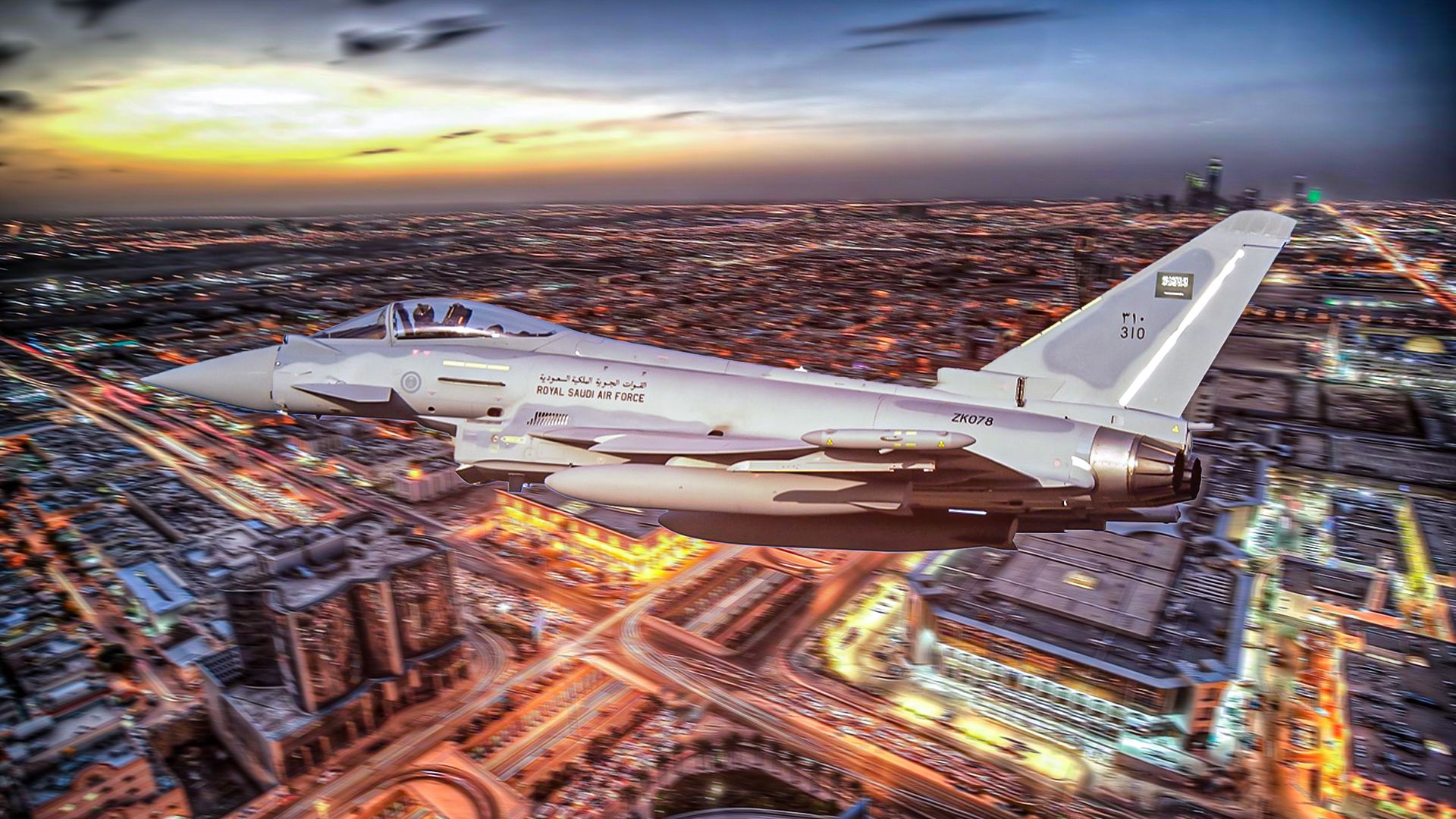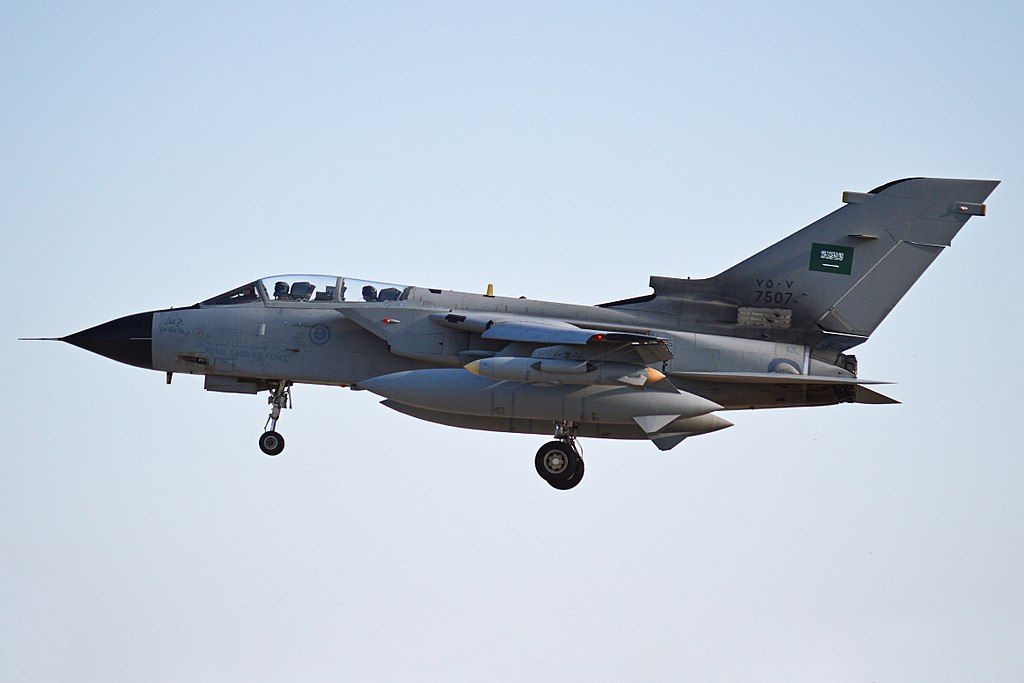Summary
- RSAF has been fighting Houthi threat in Yemen since 2015 using various advanced aircraft.
- RSAF relies on F-15 Eagle and Eurofighter Typhoon for combat operations against Houthis.
- RSAF Tornados have been used in combat since 1991, with at least three lost in the conflict against the Houthis.
To mere offhand, casual observers of international security affairs amongst the American general public, the menace of the Iranian-back Houthi terrorist group in Yemen that’s ravaging commercial shipping in the Red Sea might seem like a relatively new phenomenon. But the Kingdom of Saudi Arabia (KSA) may beg to differ. They’ve been fighting the Houthi scourge since 2015.
Simple Flying now examines the combat capabilities of the Royal Saudi Air Force (RSAF; الْقُوَّاتُ الْجَوِّيَّةُ الْمَلَكِيَّةْ ٱلسُّعُوْدِيَّة/Al-Quwwat Al-Jawiyah Al-Malakiyah as-Su’udiyah) in fighting the Houthi threat (and any other potential threats to the Kingdom’s security and stability.
Royal Saudi Air Force basic facts and figures
The RSAF was officially launched in June 1920. Current manpower sits at approximately 20,000 personel, under the command of Lieutenant General (ريق/Fariq) Turki bin Bandar Al Saud, who assumed his current position in February 2018.
The World Directory of Modern Military Aircraft (WDMMA) counts 702 total units in the RSAF’s active aircraft inventory, ranking 17th out of 100 air services from 74 nations tracked (WDMMA’s RSAF page was last updated in 2021) Of those 702 airframes, 380 are fighter planes.
Boeing (previously McDonnell Douglas) F-15 Eagle
Arguably the most prestigious warbird in the RSAF arsenal. After all, Saudi Arabia is one of only three non-U.S. customers of the Eagle, the other two being the Israel Air Force (IAF; somewhat ironic if the current rumors about a pending normalization of relations between the KSA and the Jewish state come to fruition) and Japan Air Self-Defense Force (JASDF); to put it another way, the F-15 gives the Saudi Arabian Armed Forces (SAAF; القُوَّات المُسَلَّحَة السُّعُودِيَّة/Al-Quwwat al-Musallahah al-Malakiyah as-Su’ūdiyah) bragging rights that none of America’s NATO allies have. What makes the Eagle even more prestigious froma Saudi national pride standpoint is that it was Eagles driver who scored the RSAF’s only-ever *confirmed* air-to-air kills against manned enemy aircraft.
The first instance transpired in June 1984, when Saudi F-15s intercepted and shot down at least one, and possibly two, Islamic Republic of Iran Air Force (IRIAF) F-4 Phantoms that had overflown the KSA’s territorial waters.
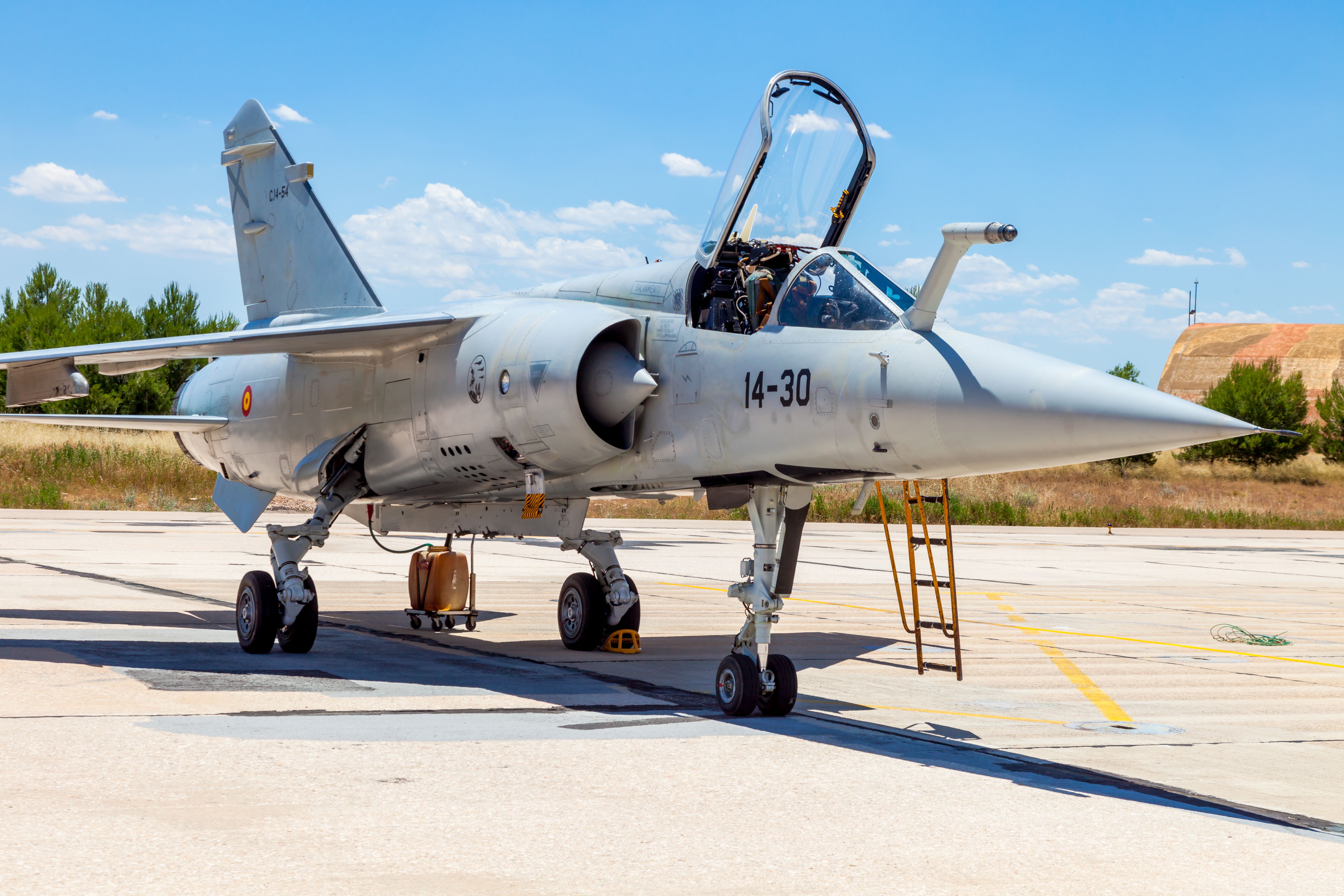
Related
The Dassault Mirage F1: Everything You Need To Know
The fighter is popular for its lightweight structure and excellent maneuverability.
The second instance occurred on January 24, 1991, during the Persian Gulf War, (AKA Operation Desert Storm) when then-Capt. (نقيب/Naqib) Ayehid Salah al-Shamrani of the RSAF’s of No 13 Squadron, engaged and destroyed two Saddam Hussein-era Iraqi Air Force (IqAF) Mirage F1EQs. It was the only double-kill scored by *any* Coalition Forces aviator during that entire conflict. The Aviation Geek Club reports that there was much controversy surrounding these shootdowns, but that is too long a story to delve into here. Suffice to say that Capt. al-Shamrani became an instant national hero.
The Eagle has further demonstrated her value to the Kingdom via her performance in that ongoing war against the Houthis:
- On July 2, 2020, an RSAF F-15 downed two Houthi Shahed 129 drones in the skies over Yemen.
- On March 7, 2021, during a Houthi attack upon multiple Saudi oil installations, Saudi F-15 pilots shot down several attacking drones using AIM-9 Sidewinder infrared (IR) missiles, with video evidence showing at least two Samad-3 UAVs and one Qasef-2K destroyed.
The RSAF received its first batches of F-15C/D warbirds in 1981. Currently, there are an estimated 60 of them in the fleet.
F-15E (AKA F-15S/SA) Strike Eagle
The ultimate iteration of the F-15, one that truly excels in both the air-to-air and air-to-ground combat roles.WDMMA lists 167 of the two-seater Strike Eagles in the Saudi arsenal, over 2.5 times as many as the single-seater C/D model Eagles.
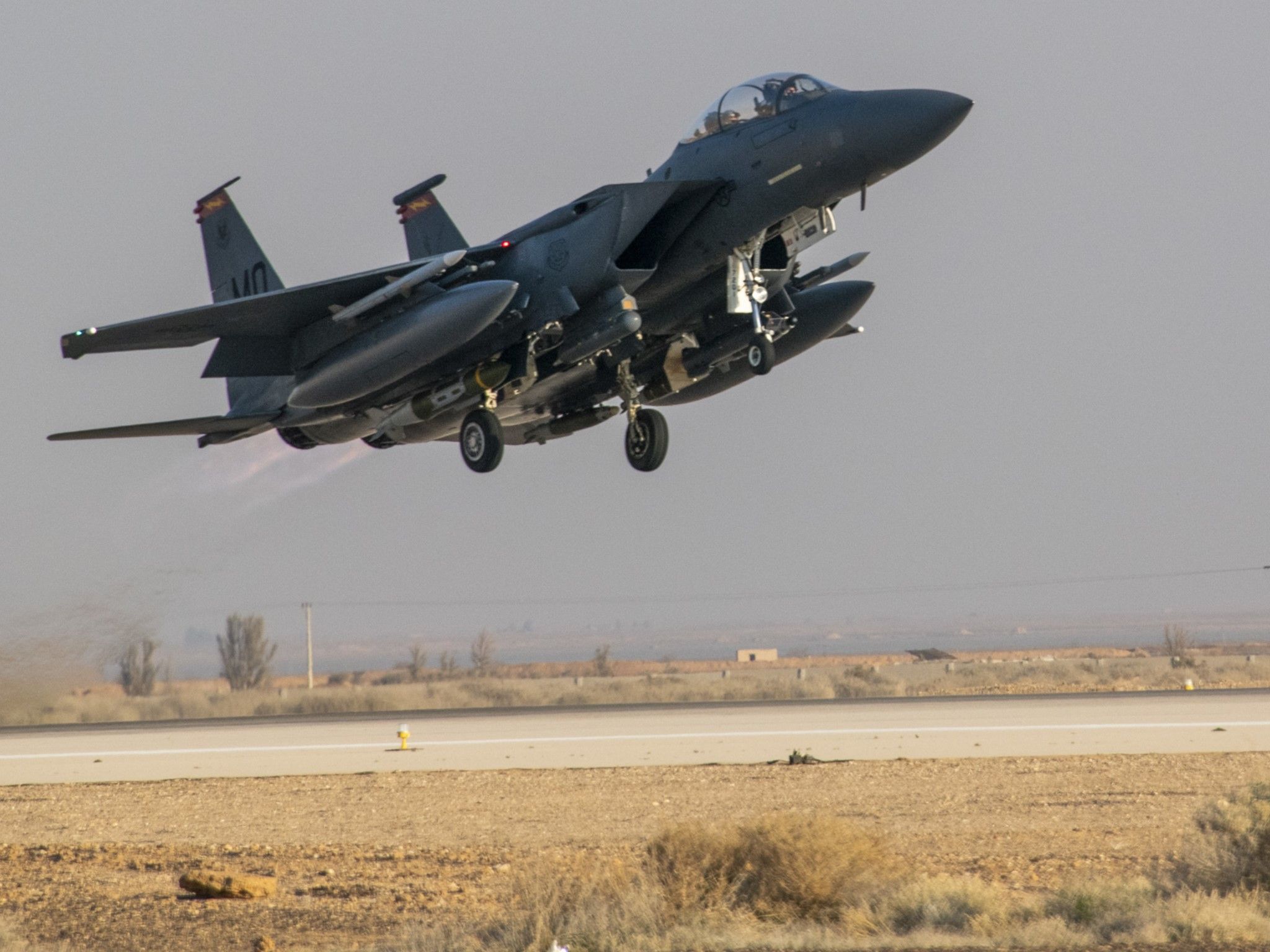
Related
How Does The McDonnell Douglas F-15E Compare To Other Strike Fighter Jets?
In this article, we compare the F-15E Strike Eagle to other strike fighters
The RSAF started with the F-15S (“S” as in “Saudi,” I presume) version, 72 of which were built between 1996 and 1998; the only major differentiator with the original F-15E being in the AN/APG-70 radar’s performance in synthetic aperture mode.
From there, the first batch of 84 F-15SA (Saudi Advanced) variants was ordered in December 2011 along with upgrades to the F-15S airframes. The F-15SA — which is the first member of the so-called Advanced Eagle family — ended up making her maiden flight on February 20, 2013. As to what distinguishes it from earlier models, we turn to U.S. Air Force Life Cycle Management Center Public Affairs:
“The new aircraft sports a digital electronic warfare suite, fly-by-wire flight control system, an infrared search-and-track system, Active Electronically Scanned Array radar, advanced cockpit displays and Joint Helmet Mounted Cueing Systems among many other advancements.”
Unlike with the F-15C/Ds, thus far (at least as far as I can ascertain), the RSAF has been using its Strike Eagles strictly for attack against Houthi ground targets (specifically air defense sites, command-and-control HQs, military airports, ballistic missiles depots, and launchers) and not for any air-to-air engagements against Houthi drones. As top-notch a strike aircraft as the F-15S/SA is, the Saudis’ use of the platform against the Houthis has not been an entirely one-sided affair, as on at least two separate occasions, a Saudi Strike Eagle was damaged by a Houthi surface-to-air missile (SAM).
Eurofighter Typhoon
Not content to rely solely on the United States as a source of fighter aircraft. the KSA has also turned to some European partners, and the Eurofighter, a joint British-German-Italian-Spanish venture, exemplifies this. Both WDMMA and the European Security & Defense (ESD) website affirm that the RSAF has 72 Typhoons, with the latter publication adding the following perspectives:
“The Kingdom of Saudi Arabia (KSA) formerly had a requirement for at least 48 – and possibly as many as 96 – new Typhoons to replace its Tornados and in March 2018 signed a memorandum of intent to purchase an additional 48 such aircraft. However, following the murder of Saudi journalist Jamal Khashoggi at the Saudi consulate in Istanbul on 2 October 2018, and due to human rights concerns, Germany placed a veto on further Eurofighter sales to the Kingdom. This led Saudi Arabia to court Dassault with regard to a potential procurement of Rafale fighters.”
“However, in light of the Hamas attack on Israel on 7 October 2023 Germany moved to lift its embargo on further Typhoon sales to the KSA. German Foreign Minister Annalena Baerbock stated during a visit to Israel on 7 January 2024, ‘The world, especially here in the Middle East, has become a completely different place since October 7,’ adding, “’We do not see the German government opposing British considerations for more Eurofighters for Saudi Arabia.’”
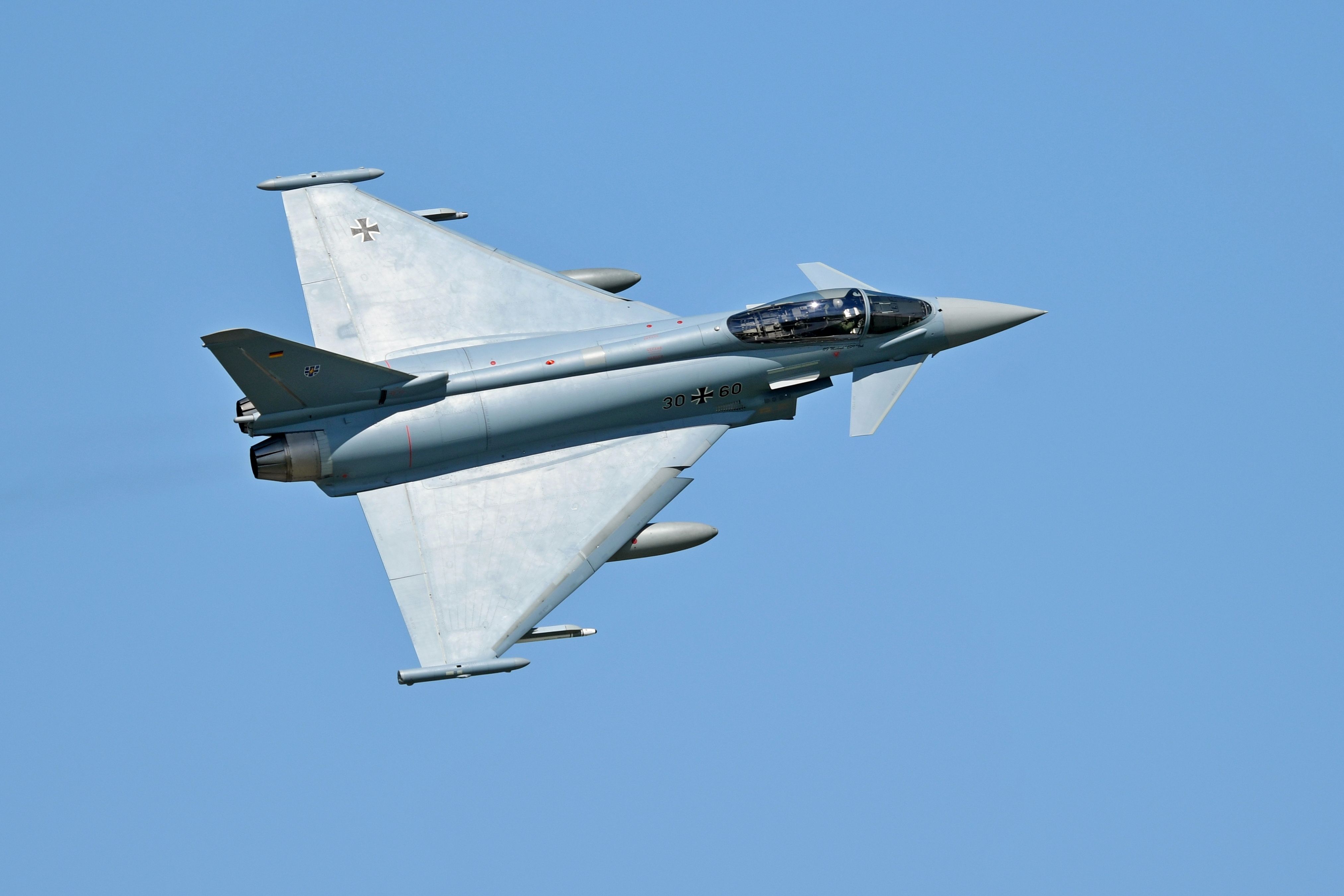
Related
30 Years: The Eurofighter Typhoon’s Growth Since Maiden Flight
The fighter is expected to remain in service until the 2050s.
As far as combat usage is concerned, RSAF Typhoons have played a central role in the Kingdom’s anti-Houthi air campaign. In addition, in February 2015, Saudi Typhoons attacked Islamic/ISIS/ISIL/Da’esh targets over Syria using used Paveway IV precision-guided bombs, marking the first time that particular ordnance has been launched in anger from that particular warbird.
Regarding the British-Saudi nexus alluded to in the above-quoted passage, this was reaffirmed this past February via Spears of Victory, a multinational exercise at the KSA’s King Abdulaziz Air Base, in which both RSAF and British Royal Air Force (RAF) Typhoons alike participated.
The official RAF website quotes RAF Squadron Leader (equivalent of a Major in the USAF) regarding the exercise:
“Spears of Victory 24 is an extremely important training opportunity for our force enablers to work alongside strategic partners in the region to demonstrate the Combat Air capacity of our highly trained pilots and engineers in the Typhoon Force. Now, as much as never before, we strive for excellence in air dominance – collaborating with allies that have come together in a demonstration of their commitment to stability in the Broader Middle East.”
Panavia Tornado
Since there was a reference to replacing the RSAF’s Tornados in the above quoted passage from ESD, it’s fitting to make the venerable and battle-proven Tornado the last warbird we discuss herein. Her career with the RSAF is far from over, as there are still 81 left in the Kingdom’s arsenal. As with the Eurofighter, the Tornado is a multinational venture, this one between the UK, Italy, and Germany.
The RSAF has definitely put its Tornados to good use since first acquiring them in March 1986 (with a second batch arriving in February 1989), first employing them in combat during Operation Desert Storm in 1991, again during a Shia insurgency in North Yemen in 2009, and of course the ongoing war against the Houthis. At least three Saudi Tornados have been lost in the latter conflict; one due to technical reasons, one in in dispute — the Houthis claimed a shootdown whillst the Saudis blamed “technical failure” — and the third was a verified shoot-down by a Houthi SAM on February 14, 2020.
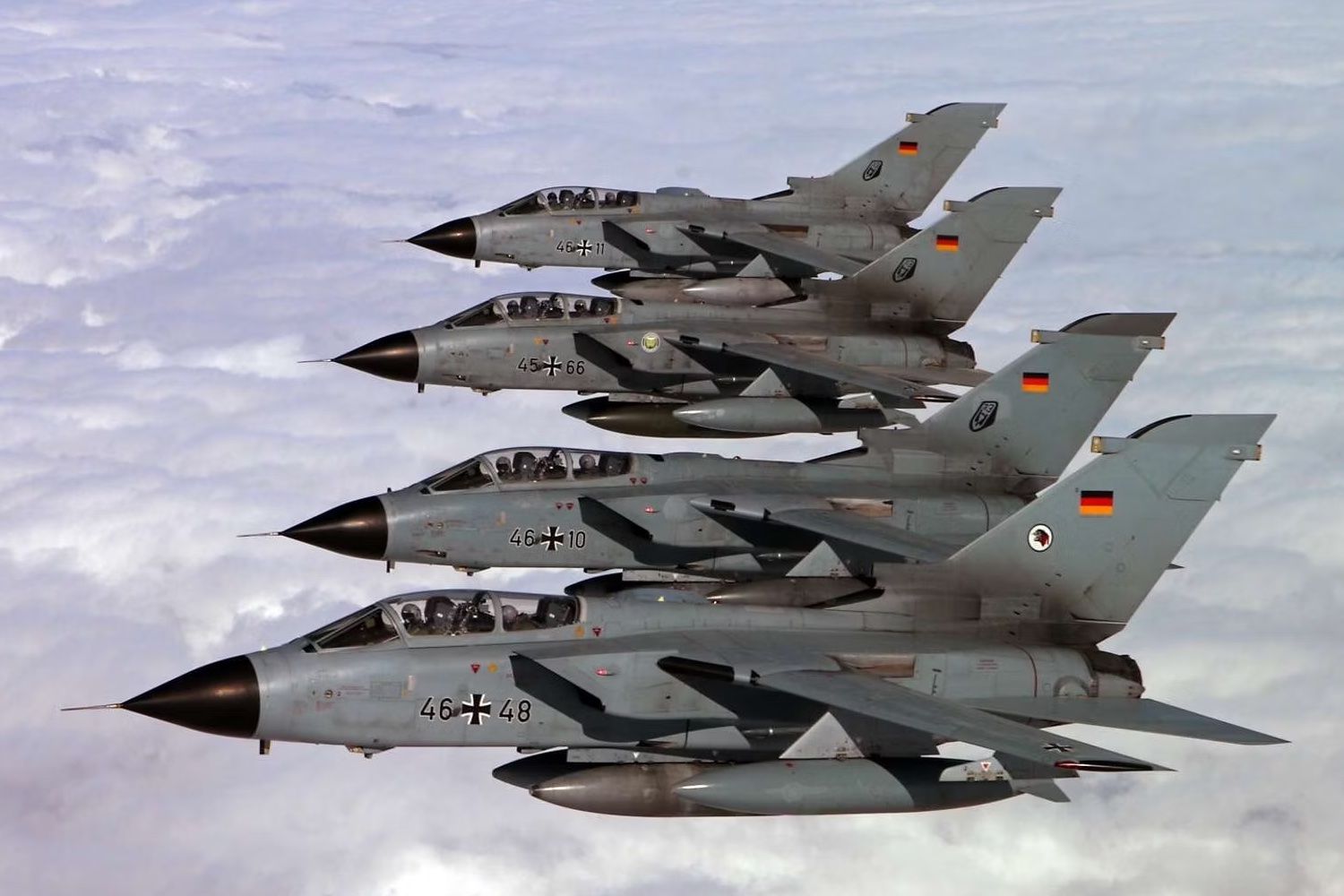
Related
Variable-Sweep Multi-Role Combat Aircraft: The Story Of The Panavia Tornado
The aircraft served a number of different purposes.

